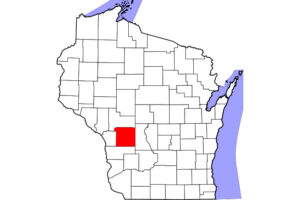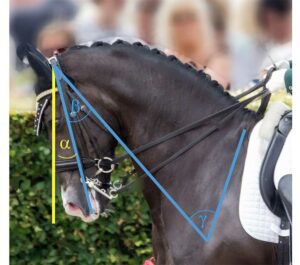20 Things Your Horse’s Teeth are Telling You

If your eyes have glossed over while reading about, say, the genetics of Class II malocclusions, or the meticulously clinical evaluation of hooks, ramps, steps, and waves, you’re likely not alone. Equine dentistry coverage usually focuses on particular conditions and is presented as a highly technical review of specific research. For a more straightforward approach, we collected insight about the equine mouth from veterinary dental provider Tom Daugherty, DVM, of Advanced Equine Veterinary Practice in Georgetown, Ky.
Following are 20 fun, useful, or otherwise interesting equine oral health facts.
1. Tooth Types
Equine oral anatomy is complex, but knowing a few basics will make it easier to understand your veterinarian’s description of what he or she observes while conducting an exam. Three material components form the tooth: dentin, cementum, and enamel. Each has differing density levels, with the enamel, found in vertical columns throughout the tooth, the hardest of the three. Within the tooth’s body is the pulp, which extends into the root. The pulp carries the main blood and nerve supply of the tooth.
Three general classes of teeth developed for specific functions:
- Canines: Found in male horses and some mares; also known as “fighting teeth.”
- Incisors: These front teeth are designed to bite off forage. Once the incisors’ work is through, the tongue moves forage back to the cheek teeth.
- Cheek teeth: Premolars and molars, collectively called cheek teeth, grind the bolus (chewed mass) and move it to the back of mouth for the horse to swallow.
2. Bits and Bitting
The bit you use when riding should not affect your horse’s teeth. “The bit should never contact the cheek teeth,” Daugherty asserts, although it does make contact with the bars, corners of the mouth, and the horse’s tongue. “The role of the bit to control a horse should put pressure on the mouth, never on the teeth.”
3. The Multicolored Mouth
Knowing what a healthy mouth looks like makes it possible to recognize discolorations indicative of potential problems. The top of the tongue can be stained brown or black from plant pigments and dirt. The inside of a horse’s mouth and lips are generally pink, but can have black pigmentation, giving some areas near the front of the mouth a spotted appearance. Gingiva (tissue immediately surrounding the base of the horse’s teeth) should be pink; redness and inflammation indicate abnormal pathology. Teeth are not pearly white; instead, they should be cream-colored with darker streaks or areas, mostly from plant pigments.
4. Tooth Eruption
Forty thousand chews per day cause substantial tooth abrasion. Teeth erupt (move out of the bone) about 1⁄8 inch per year throughout a horse’s lifetime to compensate for normal attrition (wear). According to Daugherty, geriatrics begin to lose some of their teeth in their late 20s if the teeth become overly worn.
5. Waves and Slopes
Horses’ chewing surfaces are not level. The upper and lower cheek teeth meet at approximately a 10- to 15-degree slope, which facilitates the strong grinding forces necessary to pulverize fibrous feed. The incisor teeth, which are not used for grinding, meet in a flat table surface. Abnormal wear patterns limit chewing efficiency. “Waves (the wavelike configuration of the premolars and molars from front to back), ramps, and hooks (both overgrowths of the teeth) all come into play,” says Daugherty. His gold standard for routine dental care “is to keep the dental arcade balanced, where the incisor table stays flat and molars have the desired slope with no excessive hooks or ramps.”
6. Specialized Tools
Some of the most common specialized tools used for dental maintenance include:
- Speculums: These instruments hold open the horse’s mouth during an exam, enabling visual access to the cheek teeth and allowing a more complete assessment of the oral cavity.
- Headlamps: The distance from a horse’s lips to the cheek teeth is as long as 18 inches; therefore, headlamps are essential for a comprehensive exam.
- Floats: “Floating” (filing or rasping) is a term borrowed from masonry. Veterinary dental providers use manual and powered floats to smooth sharp enamel edges from the teeth. These instruments come in many lengths, and the type and angle of the blade are specialized for different parts of the mouth.
- Forceps: This tweezerlike tool pulls debris from between teeth.
- Dental exploration mirror: Similar to tools used for human dentistry, the oral mirror has a slightly larger head and a much longer handle.
- Periodontal probes: These blunt prods used for gingival exploration have markings to help measure the periodontium (tissues that surround and support the horse’s teeth).
- Dental picks and explorers: Examiners use these instruments (which are more pointed than probes) to get a feel of the tooth and detect soft spots or open pulp chambers.
- Extraction devices: These include molar spreaders to break down periodontal ligament attachment; extraction forceps in a variety of shapes and sizes; and fulcrums for leverage.
7. Playing It Safe
Safety equipment is an important part of dental work for both the provider and the patient.
- Mechanical restraints: Some dental care providers use stocks for patient restraint while others work in open stalls. Some type of head support is necessary, such as a cradled-head stand or a suspended dental halter rig.
- Sedation: According to Daugherty, medical tranquilization should be used in every dental case. “While sedated, horses should still have reactivity,” he says. “The goal is to enable a complete oral examination and treatment procedure without having excessive reaction from the patient–but also without the horse falling down.”
8. Signs of Trouble
As prey animals, horses naturally attempt to hide physical ailments. But observant handlers should be able to spot indications of physical stress, including the following problems that can originate with dental issues:
- Choke and/or colic: Severe abnormalities in dental arcades can, over time, result in decreased ability to grind forage thoroughly. Horses with terribly compromised dentition could be more likely to suffer from esophageal blockage (“choke”) or impaction-type colic.
- Poor body weight: Inability to chew forage properly usually results in insufficient feed intake and/or decreased nutrient availability, resulting in weight loss or difficulty maintaining body weight.
- Unprocessed foodstuff: Whole grains or stems and long fibers in the horse’s stools can indicate poor feed mastication (chewing).
- Halitosis: Bad breath often is due to necrotic (decayed) tissue damaged by periodontal disease.
- Excessive salivation: Poor dental alignment, painful teeth, periodontal disease, and more can cause “slobber mouth.” (Be warned, however, that this clinical sign might also indicate choke.)
- Head tilt: Angling or lifting the head while chewing has a straightforward purpose: Tilting helps shift food to the other side of the mouth–it’s simple physics. This practice indicates difficulty or discomfort in chewing.
9. Horses Behaving Badly
Behavior changes–including resisting the bit, tossing the head while being tacked, and a surly disposition during handling or work–can sometimes indicate dental problems.
10. Cracked Teeth
Veterinary theory once held that pebbles or other foreign objects were the primary cause of fractured teeth. Research by Paddy Dixon, MVB, PhD, MRCVS, of the University of Edinburgh’s Division of Veterinary Clinical Sciences, has shown the majority of fractures are instead due to anatomical weakness (e.g., following bacterial breakdown and gradual weakening of the tooth).
11. Caps Off
Equivalent to baby teeth in their human handlers, caps in horses are deciduous (they are shed after a growth period). Caps have gingival attachments even as permanent teeth erupt under them, and they are ejected by sheer forces as the horse chews. Retained caps can cause improper alignment of permanent teeth as they compete for space in the dental arcade.
12. It’s Like Pulling Teeth
Many horses of both sexes have wolf teeth as youngsters. Daugherty says most horses that have these vestigial (existing as a rudimentary structure) teeth will show them as yearlings, although in some individuals eruption might not occur until age 2 or 3. Wolf teeth can cause bitting issues and performance problems, and their extraction is common. Wolf teeth removal is not always necessary, however, as many horses with these teeth won’t have adverse effects. Conversely, blind wolf teeth–those not erupted through the gingiva but still coming into contact with the bit–are almost always problematic.
13. How’s That Feel?
From the patient’s perspective, Daugherty asserts that routine dental care “should not be a painful procedure.” By simply removing sharp enamel points, “we’re not getting into live tissue. I imagine it would feel much like when we’re having our teeth polished. There’s a vibration effect,” he explains. The tooth does, however, have an elaborate nerve supply. Dentin and the pulp are innervated, while enamel and cementum are not.
14. Pretty as a Picture
How do digital (DR) and computed (CR) radiography fit into equine oral health maintenance? Daugherty explains that radiographs are equivalent to a dental X ray for humans. “We tend to incorporate X rays as a standard part of a good oral examination,” he says. “I use my CR unit any time I see a potential problem or something that doesn’t look right. It’s the only way to look at dental anatomy below gum level.”
15. Time for a Checkup
Foals’ teeth begin erupting within a week after birth, and a full set of baby teeth is present by 6 months. Thus, newborns should have a dental exam during the initial veterinary foal evaluation, setting the stage for a lifetime of oral health. A 6-month evaluation and optional wolf teeth extraction at 12 months close out the foal’s first year. Through age 5, changes take effect rapidly in the young horse’s dental development–loss of deciduous teeth, erupting canines, erupting permanent cheek teeth. Daugherty cautions that multiple pathologies can occur during these formative years, with retained caps and misalignments the most prevalent. Veterinarians recommend 6- to 12-month examinations during this time.
An annual exam is sufficient for most healthy horses between ages 5 and 15. Older horses with slower tooth growth might have exams spaced at 15 or 18 months, as advised by your veterinary dental provider. Some older horses will need more frequent exams due to age-related dental disease.
16. Mini Noggins
Have you ever heard that Miniature Horses’ teeth are often unable to fit in their small heads? It’s not just horse lore, says Daugherty. He explains that with selective breeding for small body dimensions, “the size of their teeth have not changed, just the amount of space those teeth need to fit in.” Some Minis will require molar and premolar removal because of crowding and misalignment.
17. How Far We’ve Come
Daugherty believes that materials technology has been the greatest recent advancement for equine dentistry. Hand tools have progressed from copper and stainless steel to tungsten carbide and diamond-coated blade. New tools are considerably sharper, do not produce as much heat, and require less maintenance.
Additionally, power dentistry equipment evolved from rotary to disc format, offering more precision and maneuverability. Mimicking human medical improvements, vacuums that reduce dental debris and improve visualization also have become common tools.
18. Wood Chewing
Stall chewing and cribbing alter incisors’ normal wear pattern; occasionally, adjustments must be made to correct these; however, they rarely cause serious dental disease or pathology.
19. Preparing for the Exam
Ever wonder, “Should I feed my horse before the dentist visits?” Daugherty says go ahead–the pre-exam flushing will clear away any residual feed matter, and many horses accept sedatives more easily after eating. Do try to avoid feeding your horse large grain meals or other concentrates before the exam because sedation can slow feed transit through the gastrointestinal tract, which might result in gas and mild colic.
20. Back to Business
After dental work is completed, caretakers should wait to feed the patient until the horse is awake enough to swallow effectively, usually one to two hours following the procedure. But a horse should not be ridden the same day he has been heavily sedated.
Take-Home Message
Horse owners should have a basic understanding of oral health so they can provide responsible stewardship, and regular oral exams should be part of a horse’s routine health maintenance. Daugherty recommends horse owners select a credentialed professional–a “licensed veterinary dental provider”–to perform equine dental procedures. He notes that their training is essential to proper evaluation and treatment of the horse’s oral health.
Written by:
Scot T. Gillies
Related Articles
Stay on top of the most recent Horse Health news with



















